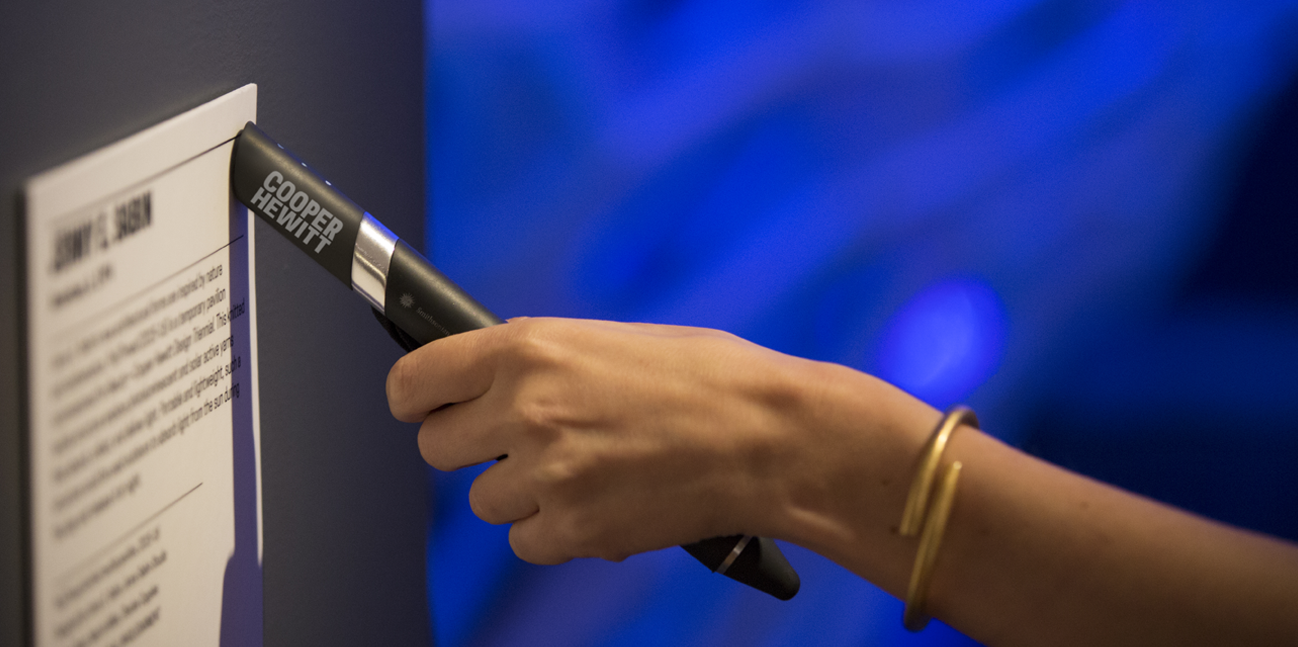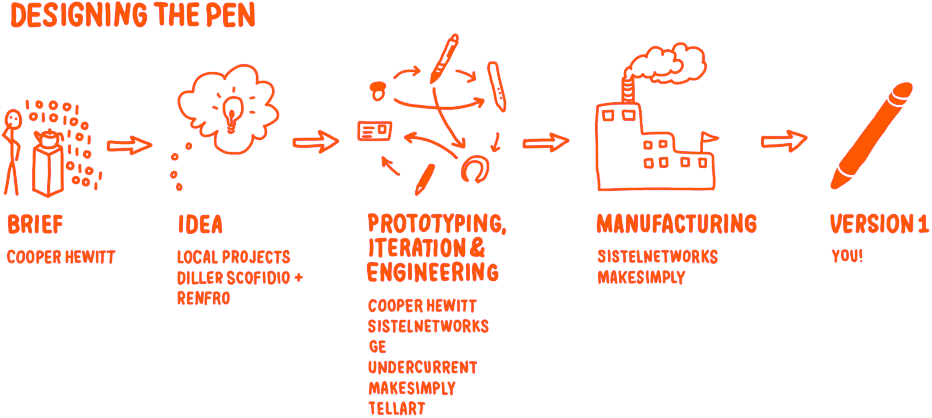Designing The Pen


The Original Concept
Asked by Cooper Hewitt to come up with a visitor technology that emphasized play and spoke to the specificities of a design museum, the concept for the Pen originated from Local Projects working with Diller Scofidio + Renfro. The Pen was pitched as a way to invite visitors to learn about design by designing themselves. Beyond working as a tool for drawing, it would encourage visitors to engage with the works on view in the museum, rather than looking at them through the small screen of the more traditional approach of a ‘museum App’.
Inside the Pen
The Pen combines two main technologies. Its interface with the interactive tables employs the sort of conductive materials common to touchscreen styli. Its interface with the object labels employs near-field communication technology. A sensor in the end of the Pen reads the information on small NFC tags embedded in the object labels. This information is stored in the Pen’s onboard memory and can be read at the interactive tables.
Using the large, ultra-high-definition screens on tables designed by Ideum, visitors may explore and manipulate the objects they have collected, discover related objects in Cooper Hewitt’s collection, retrieve contextual information, learn more about designers, design processes and materials, watch and share videos and even sketch their own designs.
Making the Pen
To convert the concept for the Pen into a robust piece of consumer hardware, Cooper Hewitt set to work with an international team, comprising GE; Sistelnetworks, a Spanish company that provides products and solutions for the wireless industry; and Undercurrent, a New York-based strategy and management consulting firm.
With the help of Undercurrent, Cooper Hewitt and subcontractors identified Sistelnetworks’ vWand, an inventory control device used in health care, as an existing product that met most of the technical requirements. To re-engineer the vWand. GE’s industrial and interaction designers developed a sleek new form, while Sistelnetworks extensively modified the internal circuits and electronics to support new functionality. Undercurrent and MakeSimply, a New York-based sourcing and manufacturing management company, converted GE’s designs into prototypes, then took the final designs to their global partners for manufacturing.
Meanwhile, Cooper Hewitt’s own digital team was working on integrating the Pen into the museum environment. Tellart, an experience design firm in Rhode Island, was engaged to create custom electronics to pair visitors’ tickets with their Pens, and the museum went through multiple rounds of testing with different approaches to the operational logistics.
Embodying the Message
The result is a device that embodies the very ideas that Cooper Hewitt conveys to visitors. Like so many of the objects in the museum’s galleries, it is the product of a collaborative, international industrial design process, exemplifying how designers solve real-world problems.
Digital experience supported by:

The Pen is powered by Duracell.